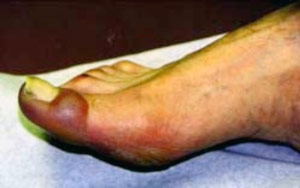Frostbite
Low temperatures, humidity, and wind velocity all are contributing factors to overexposure from the cold. Usually the victim is unaware of frostbite until someone else observes the pale, glossy skin. Frostbite results when crystals form, either superficially or deeply in the fluids and soft tissues of the skin. Frostbite is the freezing of a specific body part such as fingers, toes, the nose or earlobes.

Frostbite is a cold-related emergency that may quickly become life or limb threatening. Frostbite can be more severe when the area is thawed and then refrozen.
Frostbite symptoms:
-
Skin color goes from red (flushed) to white or grayish-yellow;
-
Pain is felt early, and then subsides completely;
-
Blisters may appear later; and
- Affected part feels very cold and numb.
Frostbite first aid procedures:
-
Cover the frozen part of body with extra clothes or blankets.
-
Bring the victim indoors as soon as possible.
-
Give the victim warm fluids.
-
Re-warm the frozen limb using tepid, not hot water. If water is not available, wrap the affected area in clothing or linens.
-
Do not rub the affected skin (this can damage the frozen tissue).
-
Do not apply heat (from a lamp, hot water bottle, or over a stove or flame).
-
After warming, exercise the affected parts for blood circulation.
- Obtain medical attention as soon as possible.
Dress for the weather and your outside work will be more comfortable. But remember, it is sometimes difficult for you recognize the symptoms of frostbite in yourself. Make sure you and your companions keep a close watch on each other for the warning signs.
10 fingers… 10 toes… If you’re not safe… Who knows!!!
Download English flyer: STOTW_306_Frostbite.pdf (203.92 kb)
Download Spanish flyer: STOTW_306_Frostbite_esp.pdf (204.55 kb)

